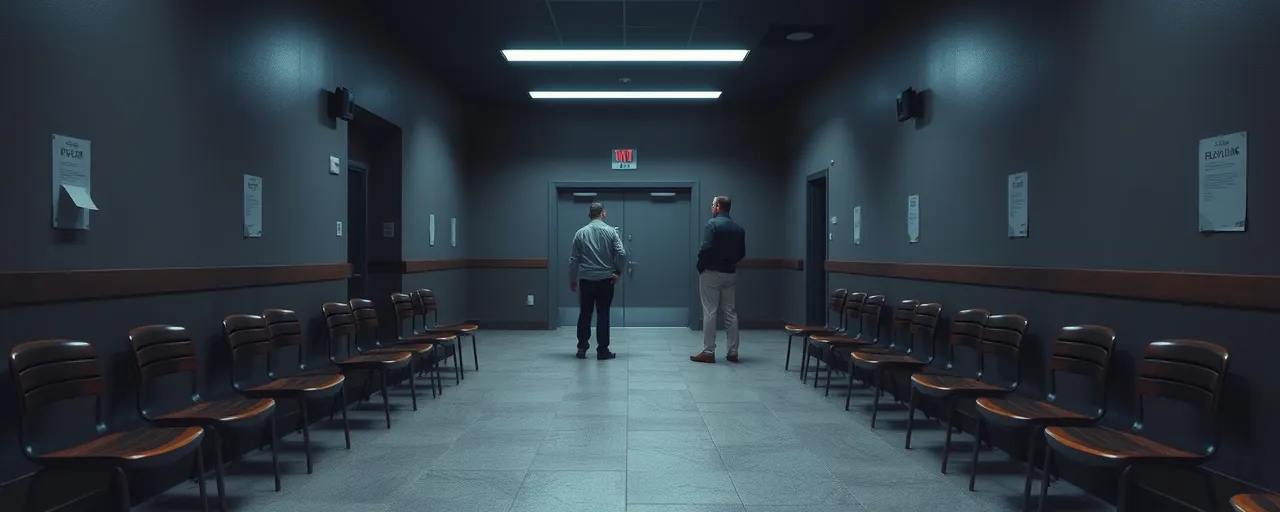Fear Grips Phoenix Immigration Courts
In Phoenix, immigration court hallways have turned tense. For two days in May 2025, Immigration and Customs Enforcement agents detained people attending their scheduled hearings. Local reports captured the shock, as individuals following legal processes faced unexpected arrests. Arizona’s Governor Katie Hobbs called for deporting criminals, not those navigating the system, highlighting a growing unease about enforcement tactics.
These arrests unfold against a backdrop of aggressive national immigration policies. A January 2025 national emergency declaration at the southern border brought 10,000 troops and new wall construction. While crossings have plummeted, the human cost—family separations, strained local resources, and fear in communities—has sparked heated debate. The nation is wrestling with how to balance security and fairness.
How ICE’s Courtroom Tactics Work
ICE agents now wait in courthouse hallways, detaining immigrants right after their cases are dismissed. This tactic, seen in Phoenix, Seattle, and Miami, often targets asylum seekers or those without criminal records. Legal advocates report that fear of arrest keeps some from attending hearings, leading to removal orders issued in their absence. The American Immigration Lawyers Association has decried these actions as undermining justice.
New Justice Department rules from January 2025 greenlit these courtroom arrests, reversing years of informal sanctuary in such spaces. The shift has disrupted trust in the legal system. Attorneys note that many detained individuals were pursuing legitimate claims, and the threat of arrest now looms over every hearing, complicating access to due process.
The Ripple Effects of Border Security
Nationwide, immigration enforcement has intensified. Executive actions since January 2025 expanded expedited removal, letting officers deport people without hearings if they’ve been in the U.S. for up to two years. A $70 million contract for new border barriers in Texas has cut crossings by 95 percent, with just 7,181 recorded in March 2025. Yet, the price of these measures is steep.
Border communities like those in Arizona face rising family separations and stretched services. Humanitarian groups argue that blocking asylum seekers violates global commitments. Federal courts have pushed back, ruling that summary deportations without notice breach constitutional rights. The clash between enforcement goals and human rights remains unresolved.
Perspectives Clash on Immigration’s Future
Advocates for robust enforcement see unauthorized migration as a security risk. Polls show 89 percent of Republican voters back increased deportations, citing reduced crossings as proof of progress. They push for more local law enforcement partnerships with ICE to streamline detentions and removals, viewing strict measures as essential for national safety.
In contrast, supporters of immigrant rights prioritize compassion. Surveys reveal 87 percent of Democratic voters favor citizenship pathways, urging expanded legal migration and asylum protections. They argue that courtroom arrests and mass detentions sow fear and fracture families, clashing with values of inclusion. Both groups see a broken system, but their visions for reform differ sharply.
Searching for Common Ground
The Phoenix arrests underscore a broader dilemma: enforcing laws while upholding fairness. ICE’s detention capacity, now at 100,000, and daily arrest targets have heightened community fears. Reports of poor medical care in detention centers and lawsuits over civil rights violations add urgency to finding solutions.
History offers lessons. The 1954 Operation Wetback and 1996 reforms curbed crossings but disrupted lives, while the 1965 family-based visa system integrated millions yet left unauthorized migration unaddressed. Today’s challenges—violence driving asylum seekers, strained border resources—demand nuanced approaches that respect due process and address root causes.
As Arizona grapples with these issues, the nation takes note. The courtroom arrests in Phoenix are more than a local concern; they reflect a pivotal moment in shaping immigration policy. With legal battles looming and communities anxious, the path ahead calls for balancing security with humanity.
